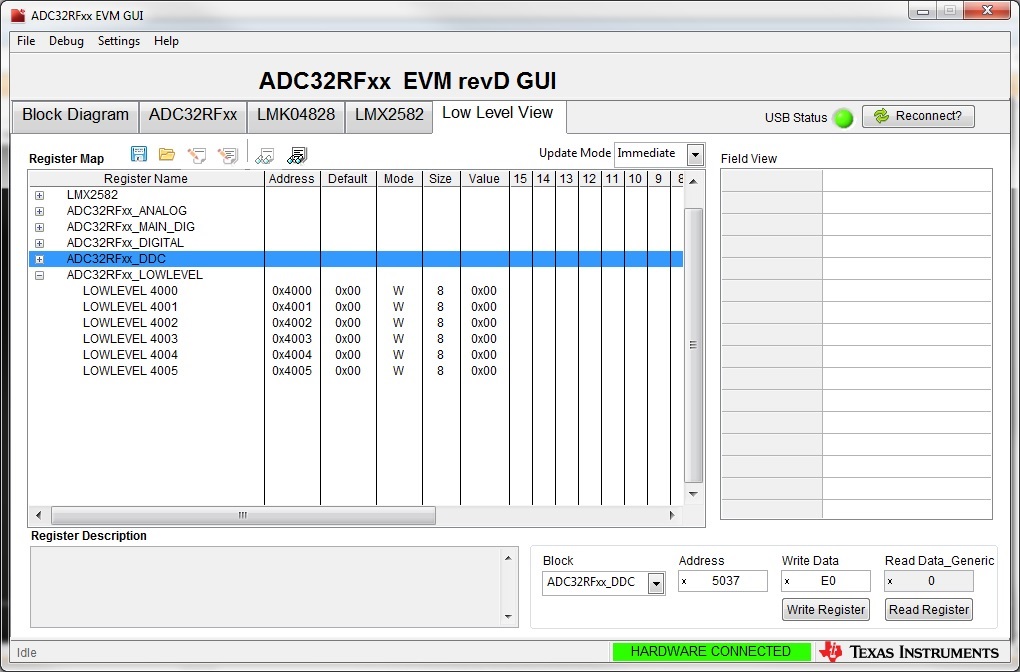We have the ADC32RF45 EVM and the associated EVM GUI. So far, I have not been able to get the JESD204B link established. The ADC datasheet discusses the TESTMODE, controlled through register 0037h. The GUI does not present this register in the known list, so I have used the raw read/write functions in the LOW LEVEL page.
All reads from that register (and every other "non-listed") register return 00h. All attempts to write to the register are accepted by the tool (i.e. no error message) but have no apparent effect on the ADC.
Does the raw mode allow read/write of "non-listed" registers? If so, why doesn't the value I wrote show up when I try to read it back?
Note, I have verified that the ADC is getting its clocks.
Thanks,
Mark


